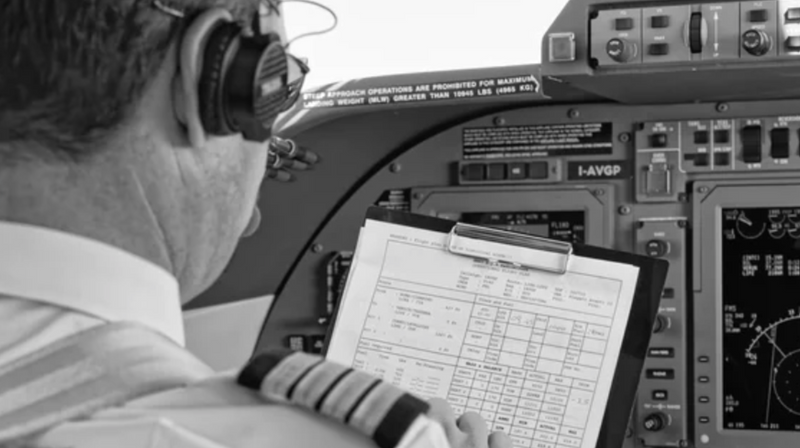Posted by Richard G. on Oct 28th 2025
For pilots flying under Visual Flight Rules (VFR), sectional charts are among the most essential navigation tools. These charts are designed specifically for visual navigation, providing detailed depictions of terrain, airspace boundaries, landmarks, and the VFR routes that help guide pilots safely across controlled airspace or through complex areas.
If you’re just beginning your VFR flying journey or brushing up on chart interpretation, understanding how VFR routes appear on sectional charts is a vital skill. But how exactly are these routes depicted, and what do they mean for pilots in flight?
What Are VFR Routes?
VFR routes are designated paths that allow pilots to transition through or near controlled airspace under visual conditions safely. They’re beneficial for student pilots, recreational flyers, or anyone operating under VFR who wants to maintain situational awareness while staying clear of restricted airspace. They’re common around busy Class B (major airports) or Class C airspace, where VFR traffic must follow specific corridors or altitudes to remain clear of airliners and other high-speed aircraft.
These routes help pilots:
- Navigate through congested airspace
- Stay clear of restricted or prohibited areas
- Maintain predictable flight paths for Air Traffic Control (ATC) coordination
These routes typically connect recognizable visual landmarks, such as highways, rivers, or towers, and may include specific altitude recommendations to separate VFR traffic from IFR (Instrument Flight Rules) operations.
How VFR Routes Appear on Sectional Charts
Sectional charts are filled with symbols, color codes, and data, but VFR routes stand out once you know what to look for. On a VFR sectional chart, these routes are shown as magenta dashed lines labeled with identifiers like “VFR Corridor”, “VFR Flyway”, or “VFR Transition Route.”
Here’s how they’re depicted:
1. VFR Flyways
Broad suggested routes that help pilots navigate around Class B airspace. They are not mandatory but are recommended for a safe, ATC-approved method to avoid heavy traffic areas.
- Flyways are often depicted on a VFR Flyway Planning Chart, a companion to the sectional chart that overlays transparent guidance lines and notes altitude recommendations.
2. VFR Corridors
These are actual “tunnels” through Class B airspace, established so pilots can pass through specific portions of controlled airspace without ATC clearance. These are marked with specific altitudes and entry/exit points.
- On sectional charts, corridors appear as narrow pathways marked with dashed lines and labeled with corridor names (e.g., “LAX Special Flight Rules Area”).
3. VFR Transition Routes
Specific routes through Class B airspace that do require ATC clearance, marked with precise headings and altitudes. They are depicted on the chart with solid blue lines and specific altitude requirements labeled along the path.
- These routes may also have distinct names or identifiers, such as “Coastal Route” or “Hollywood Park Route.”
Each of these aids in efficient navigation while keeping visual pilots separated from IFR and commercial traffic.
Flyway Planning Charts
There are special side panels included on the back of many sectional charts. These diagrams depict the same airspace in a simplified, bird’s-eye view and highlight common visual reporting points, altitudes, and suggested paths to minimize conflict with controlled air traffic.
Key Visual Cues to Remember
When reviewing your VFR Sectional Chart, look for these visual cues:
- Solid or dashed lines that define corridors and transition routes
- Labeled altitudes that specify which levels are appropriate for the route
- Directional arrows showing intended traffic flow
- Waypoint identifiers or geographic references that make it easier to follow the route visually
They are particularly valuable when operating near complex airspace systems like Los Angeles, Chicago, or Dallas–Fort Worth.
Pro tip: Always cross-check your chart with the Chart Supplement and NOTAMs before your flight; airspace and route details can change.
Using VFR Sectional Charts for Safe Navigation
Before every flight, it’s crucial to study your VFR Sectional Chart to understand the terrain, obstacles, and airspace boundaries along your route. Even when using GPS or EFBs like ForeFlight, a paper sectional chart remains a reliable, FAA-approved reference.
Remember:
- Always note VFR waypoints and altitude restrictions along your route.
- Watch for airspace floors and ceilings to avoid controlled airspace.
- Check chart revision dates to ensure you’re flying with current information.
Why Sectional Charts Are Still Essential for Modern Pilots
Even in the age of digital navigation and GPS flight planning, sectional charts remain the foundation of visual navigation. They don’t just show where you can fly, they show why certain routes exist, helping you build situational awareness and confidence in the cockpit.
Paired with modern tools like aviation GPS receivers and tablets, sectional charts give pilots the best of both worlds: the reliability of printed information and the convenience of real-time digital updates.
Explore the latest VFR Sectional Charts available at Marv Golden and make sure your charts are always up to date for your next flight.

